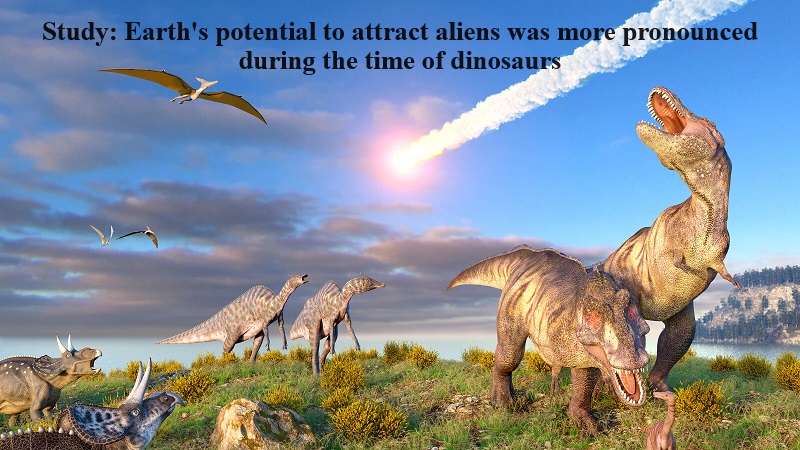
Research by astrobiologists from Cornell University suggests that Earth may have been more attractive to potential extraterrestrial beings during the time of dinosaurs than in the present day. The researchers conducted a comprehensive analysis spanning 540 million years, covering the Phanerozoic Eon, examining biomarker shifts crucial for detecting signs of life across vast cosmic distances.
Two key biomarker pairs, oxygen and methane, along with ozone and methane, were particularly robust between 100 to 300 million years ago. This phenomenon was attributed to an abundance of greenery significantly elevating oxygen levels in Earth’s atmosphere during the Jurassic era. Hypothetical extraterrestrial beings with advanced telescopes might have identified our planet more readily during that time than they could today.
The research considered factors influencing atmospheric oxygen levels, such as forest cover on land, marine species variety in oceans, and prevailing weather patterns over the past 400 million years. Atmospheric oxygen is believed to have fluctuated within the 16-35 percent range, known as the ‘fire window,’ crucial for the development and sustenance of life.
Astronomers, equipped with technology like the James Webb Space Telescope (JWST), are actively seeking analogous light fingerprints or transmission spectra that may indicate atmospheres capable of supporting familiar life forms. The Cornell study not only explores Earth’s potential detectability by extraterrestrial beings but also refines criteria for identifying habitable exoplanets. However, the question of whether extraterrestrial life would evolve similarly to Earth’s intricate biosphere remains uncertain amidst these advancements.

Post Your Comments